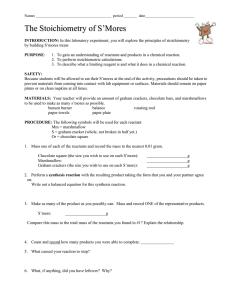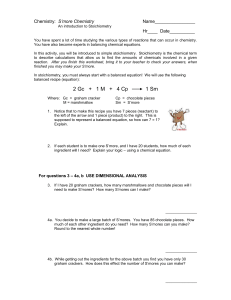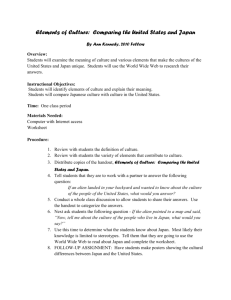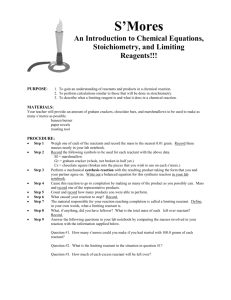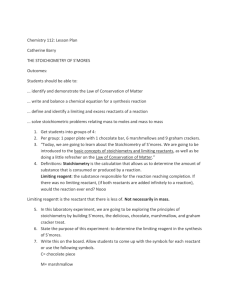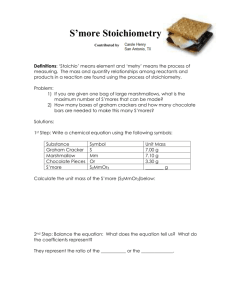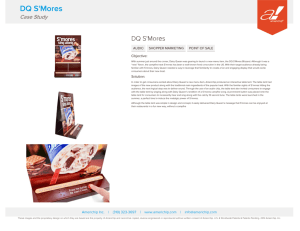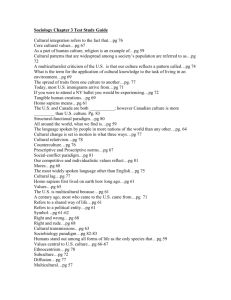Lab: Smores
advertisement
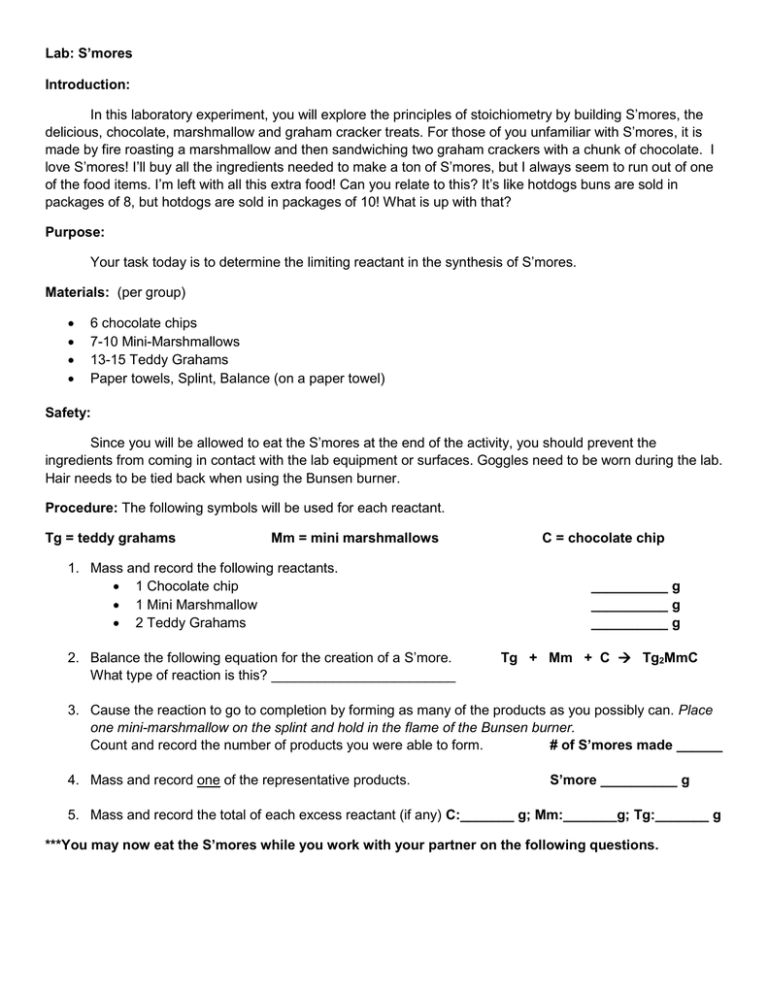
Lab: S’mores Introduction: In this laboratory experiment, you will explore the principles of stoichiometry by building S’mores, the delicious, chocolate, marshmallow and graham cracker treats. For those of you unfamiliar with S’mores, it is made by fire roasting a marshmallow and then sandwiching two graham crackers with a chunk of chocolate. I love S’mores! I’ll buy all the ingredients needed to make a ton of S’mores, but I always seem to run out of one of the food items. I’m left with all this extra food! Can you relate to this? It’s like hotdogs buns are sold in packages of 8, but hotdogs are sold in packages of 10! What is up with that? Purpose: Your task today is to determine the limiting reactant in the synthesis of S’mores. Materials: (per group) 6 chocolate chips 7-10 Mini-Marshmallows 13-15 Teddy Grahams Paper towels, Splint, Balance (on a paper towel) Safety: Since you will be allowed to eat the S’mores at the end of the activity, you should prevent the ingredients from coming in contact with the lab equipment or surfaces. Goggles need to be worn during the lab. Hair needs to be tied back when using the Bunsen burner. Procedure: The following symbols will be used for each reactant. Tg = teddy grahams Mm = mini marshmallows 1. Mass and record the following reactants. 1 Chocolate chip 1 Mini Marshmallow 2 Teddy Grahams 2. Balance the following equation for the creation of a S’more. What type of reaction is this? ________________________ C = chocolate chip __________ g __________ g __________ g Tg + Mm + C Tg2MmC 3. Cause the reaction to go to completion by forming as many of the products as you possibly can. Place one mini-marshmallow on the splint and hold in the flame of the Bunsen burner. Count and record the number of products you were able to form. # of S’mores made ______ 4. Mass and record one of the representative products. S’more __________ g 5. Mass and record the total of each excess reactant (if any) C:_______ g; Mm:_______g; Tg:_______ g ***You may now eat the S’mores while you work with your partner on the following questions. Analysis Questions: 1. Is there a relationship between the mass of a S’more and the masses of the reactants used to make it? If so, what is the relationship? Bonus: What law have you studied that might define this relationship? 2. Define limiting reactant in your own words. 3. In this experiment, what was the limiting reactant? 4. What reactants, if any, were in excess? How much of each did you have leftover? Extension: Set the following problems up using dimensional analysis. Be sure to show ALL your work and remember ALL answers should include a unit. Please note; for the purposes of this lab assume that 1 piece of each food item represents 1 mole of that food. 5. Suppose you were given an unlimited amount of teddy grahams and mini-marshmallows, but only 3 moles (pieces ) of Hershey’s chocolate: a. How many moles of S’mores could you make? b. How many moles of teddy grahams would you need? c. How many moles of mini-marshmallows would you need? 6. Suppose you were given 10 moles of mini-marshmallows, 5 moles of Hershey’s chocolate and 15 moles of teddy grahams: a. How many S’mores can you make with each ingredient? b. Which ingredient limits the S’more making? c. Based on your answer from b, what is the mass of the S’mores being made with the given ingredients?
